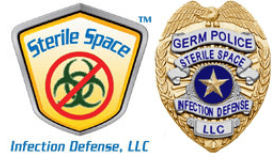Originally published in the NY Times
It is so easy for infections to be transmitted through skin contact in wrestling that there is a condition named for it: Herpes gladiatorum.
When parents of young athletes reel off their kids’ sports-related health issues, they usually think of sprains, broken bones and concussions. Infectious diseases may not even make the list.
But to pediatricians, the close contact and casual equipment give and take that are often components of team bonding can also be a breeding ground for infection. A new clinical report released Monday by the American Academy of Pediatrics focuses on how to prevent and control outbreaks of infectious diseases in organized sports.
“All kinds of things travel through the teams,” said Dr. Stephen G. Rice, who is starting his 43rd season as a high school team doctor. Adolescents can often be “sort of sloppy about sharing water bottles, equipment, sometimes even helmets,” said Dr. Rice, the director of sports medicine at Jersey Shore University Medical Center and one of the authors of the report.
Dr. H. Dele Davies, professor of pediatric infectious diseases and public health at the University of Nebraska Medical Center, and the lead author on the clinical report, said that he wants to emphasize to parents that “participation in sports is a good thing; we want their children to participate, we just want to keep them safe.”




